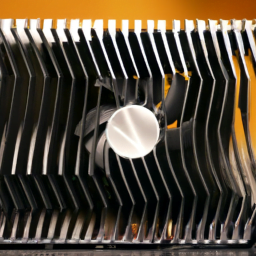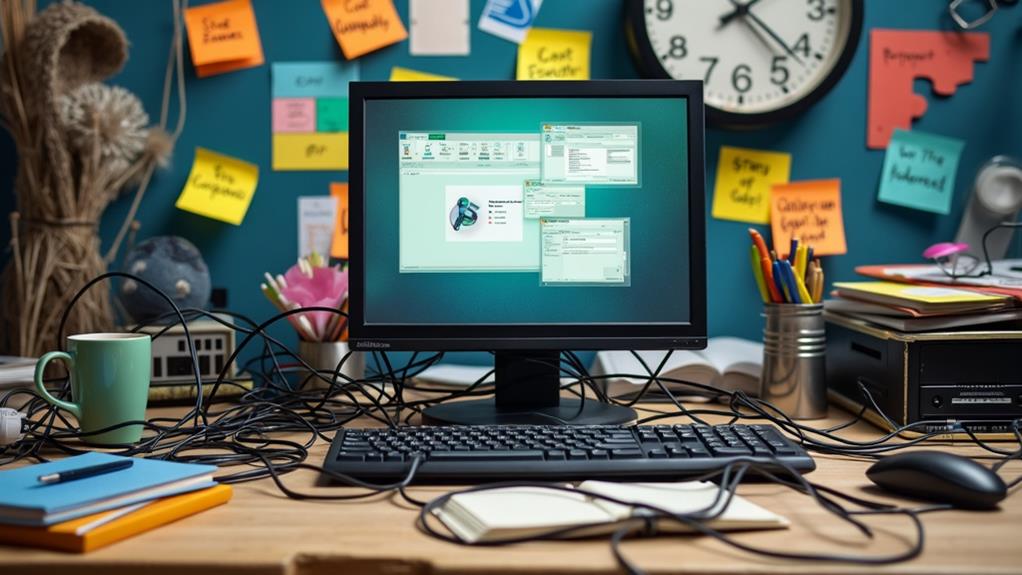



In the world of technology, mini PCs have become increasingly popular due to their compact size and portability. But have you ever wondered how these tiny powerhouses manage to stay cool while running demanding tasks? The answer lies in their clever cooling systems, which efficiently dissipate heat to prevent overheating. Let’s take a closer look at the fascinating mechanisms behind how mini PCs manage to keep their cool even in the most intense moments of operation.
The Fundamental Need for Cooling
Importance of adequate cooling in PCs
When it comes to the performance and longevity of your mini PC, adequate cooling is essential. Mini PCs, like their larger counterparts, generate heat during operation, and if this heat is not effectively dissipated, it can have several detrimental effects on the performance and lifespan of the device. Therefore, ensuring proper cooling is crucial to maintain optimal performance and prevent any potential damage to the internal components of your mini PC.
Effects of heat on a mini PC’s performance
Excessive heat can significantly impact the performance of a mini PC. When the internal temperature rises beyond optimal levels, the components, including the processor, graphics card, and memory, can experience thermal throttling. This occurs when the components automatically reduce their performance to reduce heat generation, leading to decreased processing power and slower operation.
Furthermore, heat also affects the stability and reliability of a mini PC. Overheating can cause instability and system crashes, leading to data loss and frustration. The increased heat can also degrade the components over time, shortening their lifespan and potentially resulting in costly repairs or replacements.
Risk of leaving a mini PC overheated
Leaving a mini PC overheated for an extended period poses several risks. The sustained high temperatures can cause irreversible damage to the internal components, potentially rendering the device inoperable. In extreme cases, overheating can even lead to thermal runaway, where the temperature rapidly increases, causing a catastrophic failure or fire hazard.
Moreover, an overheated mini PC can negatively impact the surrounding environment. The excess heat emitted can raise the ambient temperature in the room, leading to discomfort for the users and potentially affecting the performance of other nearby electronic devices.
Structural Design of Mini PCs for Cooling
The compact structure of mini PCs
One of the unique characteristics of mini PCs is their compact structure. Unlike full-sized desktop computers, mini PCs are designed to be small and space-saving, making them ideal for use in tight spaces or for portable applications. However, this compact design can present some challenges when it comes to cooling.
The limited space within a mini PC chassis restricts the airflow and makes it difficult to dissipate heat effectively. The compact layout also means that the components are positioned closer together, creating potential heat buildup and thermal hotspots. To address these challenges, mini PC manufacturers employ various design strategies to optimize cooling within the limited space.
Placement of components for effective heat dissipation
Manufacturers carefully consider the placement of components within a mini PC to maximize heat dissipation. Typically, the motherboard and other critical components are strategically positioned to promote better airflow. Heat-generating components, such as the processor and graphics card, are often placed near the ventilation areas or equipped with additional cooling mechanisms to ensure efficient heat transfer.
Additionally, mini PCs may feature heat sinks or heat pipes to draw heat away from sensitive components and facilitate its dissipation throughout the chassis. These heat dissipation mechanisms help prevent heat concentration in specific areas, reducing the risk of thermal throttling and component failure.
Use of materials that aid cooling in mini PC chassis
Choosing the right materials for the chassis of a mini PC can also contribute to effective cooling. Materials with good thermal conductivity, such as aluminum or copper, are commonly used in mini PC construction. These materials help dissipate heat more efficiently, minimizing temperature buildup within the chassis.
Furthermore, manufacturers may incorporate ventilation holes or perforated panels in the chassis design to facilitate airflow. These openings allow cool air to enter the mini PC while hot air is expelled, creating a natural convective flow that aids in heat dissipation.
Built-in Cooling Systems in Mini PCs
Understanding the built-in cooling systems in mini PCs
Mini PCs often come equipped with built-in cooling systems designed to manage the heat generated during operation. These cooling systems help maintain optimal temperatures within the device, preventing overheating and ensuring reliable performance.
Types of built-in cooling systems
There are primarily two types of built-in cooling systems commonly found in mini PCs: active cooling and passive cooling.
How each type of built-in cooling system works
Active cooling systems utilize fans or blowers to actively circulate air within the mini PC. These fans draw in cool air from the surroundings and expel hot air, facilitating heat dissipation. The airflow generated by the fans helps maintain lower temperatures and prevents component overheating.
On the other hand, passive cooling systems rely on natural convection and heat transfer to dissipate heat. They do not involve any active components like fans or blowers. Instead, passive cooling systems utilize heatsinks, heat pipes, or thermal pads to absorb and transfer heat away from the components, allowing it to dissipate into the surrounding environment.
Thermal Design Power (TDP) and Its Role
Understanding TDP in a mini PC
Thermal Design Power (TDP) is an important concept to understand when it comes to cooling a mini PC. TDP refers to the maximum amount of heat that a component, such as a processor or graphics card, is designed to dissipate under typical operating conditions. It is expressed in watts and serves as an indicator of the cooling requirements for a particular component.
How TDP contributes to cooling
The TDP rating provides valuable information for selecting cooling solutions for mini PCs. By determining the TDP of the components within your mini PC, you can ensure that the cooling systems in place are capable of effectively dissipating the generated heat. Matching the cooling capacity to the TDP helps prevent thermal throttling and ensures the components operate within safe temperature limits.
Impact of TDP on a mini PC’s performance
The TDP of a component directly affects its performance within a mini PC. Components with higher TDP ratings generally generate more heat during operation. If the cooling systems are not adequate to handle the higher heat output, thermal throttling may occur, negatively impacting the performance of the mini PC. Therefore, it is essential to consider the TDP of the components when designing or selecting a mini PC to avoid any performance limitations due to inadequate cooling.
Active Cooling Systems in Mini PCs
Role of active cooling systems in mini PCs
Active cooling systems play a vital role in managing heat within a mini PC. By utilizing fans or blowers, these cooling systems actively move air, facilitating better heat dissipation and maintaining lower internal temperatures.
Components of active cooling systems
The main components of active cooling systems in mini PCs include fans or blowers, heatsinks, and thermal interface materials. The fans or blowers draw in cool air from the surroundings and direct it towards the heat-generating components. The heatsinks, often made of aluminum or copper, absorb the heat and maximize the contact surface area for efficient dissipation. Thermal interface materials, such as thermal paste or pads, ensure effective heat transfer between the components and the heatsinks.
Understanding how active cooling systems function
Active cooling systems operate by creating airflow within the mini PC chassis. The fans or blowers draw in cool air and direct it towards the heat-generating components, such as the CPU or GPU. The continuous airflow carries away the heat, preventing it from accumulating and causing thermal issues.
Depending on the design, active cooling systems can feature multiple fans positioned strategically within the chassis to optimize airflow. These fans may have variable speed settings or utilize temperature sensors to adjust their speed accordingly, providing effective cooling based on the system’s requirements.
Passive Cooling Systems in Mini PCs
How passive cooling systems work
Passive cooling systems rely on natural heat transfer principles to cool the mini PC. These systems do not utilize any active components like fans or blowers, resulting in silent operation. Instead, passive cooling systems leverage heat sinks, heat pipes, or thermal pads to absorb the heat generated by the components and facilitate its dissipation into the surrounding environment.
The heat sinks, typically made of aluminum or copper, act as large surface areas that absorb the heat from the components. Heat pipes, which contain a working fluid, transport the absorbed heat away from the heat source to a cooler region of the heat sink. Thermal pads provide efficient thermal contact between the heat-generating components and the heat sink, facilitating heat transfer.
Benefits of passive cooling systems
Passive cooling systems offer several advantages for mini PCs. The absence of fans or blowers eliminates any noise associated with active cooling. This makes passive cooling systems ideal for applications that require silent operation, such as media centers or office environments.
Furthermore, passive cooling systems have no moving parts, reducing the risk of mechanical failures and improving the overall reliability of the mini PC. The simplicity of the design also contributes to lower power consumption, resulting in energy savings.
Drawbacks of passive cooling systems
While passive cooling systems offer advantages, they also have some limitations. Due to their reliance on natural convection for heat dissipation, passive cooling systems may struggle to handle higher heat loads generated by more powerful components. This can lead to higher temperatures within the mini PC, potentially resulting in thermal throttling or reduced performance.
Passive cooling systems also require careful design and adequate heat sink surface area to ensure efficient heat transfer. Insufficient heat dissipation can cause temperature buildup, adversely affecting the longevity and performance of the mini PC.
Hybrid Cooling Systems in Mini PCs
Concept of hybrid cooling systems
Hybrid cooling systems combine the benefits of both active and passive cooling techniques to provide optimal cooling performance for mini PCs. By integrating active and passive cooling elements, these systems capitalize on their individual strengths to overcome the limitations of each technique.
Advantages of hybrid cooling systems
Hybrid cooling systems offer several advantages for mini PCs. By incorporating active cooling components, such as fans or blowers, they can effectively circulate air within the chassis and ensure adequate heat dissipation. This allows them to handle higher heat loads generated by powerful components while preventing thermal throttling and maintaining optimal performance.
At the same time, hybrid cooling systems utilize passive cooling elements, such as heat sinks or heat pipes, to facilitate heat transfer and provide additional heat dissipation capabilities. The combination of active and passive cooling techniques enhances overall cooling efficiency and reliability.
How hybrid cooling systems are implemented in mini PCs
The implementation of hybrid cooling systems varies depending on the design and capabilities of the mini PC. Typically, these systems may feature a combination of fans or blowers, heat sinks, heat pipes, and thermal interface materials. The active cooling components actively circulate air and prevent heat buildup, while the passive cooling elements absorb and dissipate the heat generated by the components.
Manufacturers carefully engineer the placement and configuration of the cooling components to ensure optimal performance and efficient heat transfer. By combining the strengths of active and passive cooling, hybrid cooling systems provide a comprehensive solution for maintaining optimal temperatures within a mini PC.
Importance of Ventilation
The role of ventilation in cooling mini PCs
Ventilation plays a crucial role in cooling mini PCs by facilitating the exchange of hot air with cool air. Effective ventilation ensures a constant flow of fresh air into the chassis while expelling hot air, preventing the buildup of heat within the system.
The adequate positioning of vents
Proper positioning of vents is essential to maximize the efficiency of ventilation in mini PCs. Vents should be strategically placed to allow cool air to enter the chassis and hot air to exit. The location of vents should align with the placement of heat-generating components to ensure effective heat dissipation and minimize temperature buildup. Well-designed vent configurations promote a balanced airflow within the chassis, maintaining optimum temperatures and preventing the risk of thermal issues.
Impact of obstructed vents on a mini PC’s cooling
Obstructed vents can severely impact the cooling capabilities of a mini PC. When vents are blocked or obstructed, the airflow within the chassis becomes restricted, impeding the dissipation of heat. This can result in higher operating temperatures and increased risk of thermal throttling or component failures.
It is important to ensure that the vents of your mini PC remain clear and unobstructed. Avoid placing objects or blocking the vents with dust or debris, as this can significantly hamper the cooling performance.
External Cooling Accessories for Mini PCs
Types of external cooling accessories
In addition to the built-in cooling systems, there are various external cooling accessories available to further enhance the cooling capabilities of mini PCs. These accessories can assist in providing additional cooling solutions, particularly in situations where the built-in cooling may be inadequate.
Some common types of external cooling accessories include laptop cooling pads, USB-powered fans, and external liquid cooling systems. Laptop cooling pads offer an elevated surface with built-in fans that increase airflow around the mini PC. USB-powered fans can be positioned near the mini PC to provide additional airflow. External liquid cooling systems utilize liquid coolant to dissipate heat efficiently, offering more advanced cooling solutions for high-performance mini PCs.
Effective use of cooling accessories
When using cooling accessories, it is important to consider the specific cooling requirements of your mini PC. Different mini PCs have varying heat generation and cooling needs, so choosing the appropriate cooling accessory is essential. Analyze the temperature and cooling performance of your mini PC, and select accessories that complement your existing cooling systems.
Additionally, proper positioning and placement of cooling accessories are crucial. Ensure that the cooling pads or fans are aligned with the heat-generating components within the mini PC to maximize their effectiveness. Consider the airflow direction and optimize the arrangement to achieve efficient heat dissipation.
Recommendations for choosing cooling accessories
When choosing external cooling accessories for your mini PC, consider factors such as size, noise level, power requirements, and compatibility with your device. Opt for accessories that are specifically designed for mini PCs and offer sufficient cooling capacity for your system’s thermal requirements. Read reviews and consult expert opinions to make an informed decision and select accessories that provide reliable and effective cooling performance.
Best Practices for Keeping a Mini PC Cool
Ensuring proper ventilation
Maintaining proper ventilation is crucial for keeping a mini PC cool. Regularly check and clean the vents, removing any dust or debris that may obstruct airflow. Position your mini PC in a well-ventilated area, avoiding closed spaces or areas with poor airflow. Allow sufficient space around the mini PC to promote natural convection and efficient heat dissipation.
Regular cleaning of vents and fans
Regularly cleaning the vents and fans is essential to prevent the buildup of dust and dirt that can impede cooling performance. Use compressed air or a soft brush to remove the accumulated debris from the vents and fan blades. Cleaning should be done carefully to avoid damaging the components or disrupting the balance of the cooling system.
Use of external cooling accessories when necessary
Consider using external cooling accessories when the built-in cooling systems of your mini PC may be insufficient. Depending on the specific cooling requirements and heat generation of your mini PC, external cooling pads, fans, or liquid cooling systems can provide additional cooling solutions. Remember to choose accessories that are compatible with your mini PC and ensure proper positioning and placement for maximum effectiveness.
By following these best practices, you can ensure your mini PC remains cool and operates at optimal performance, extending its lifespan and preventing potential thermal issues. Consider the unique cooling needs of your mini PC and implement appropriate cooling strategies to keep it running cool and reliable for years to come.
Disclosure: As an Amazon Associate, I earn from qualifying purchases.






